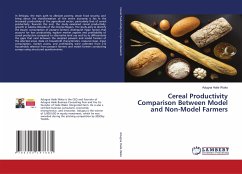High Quality Content by WIKIPEDIA articles! The economies of Canada and the United States are extremely similar because they are both developed countries and are each other's largest trading partners. However, key differences in population makeup, geography, government policies, and productivity all result in different economies.Measured by economic freedom, they are both world leaders. Canada and United States ranked 7th and 9th of 141 countries on the Economic Freedom of the World 2009. They ranked 6th and 7th of 179 countries on the Index of Economic Freedom 2009.Their per capita incomes are also similar.Although Canada is marginally larger than the United States, a much smaller percentage of Canada is arable land. Agriculture is limited to the far south of Canada, areas near the American border; whereas, except for a few deserts and mountain ranges, most of the United States can be used for agriculture.The human geography in both countries is an historical by-product of the agicultural situation. Canada's much smaller population is concentrated in the south, with large areas in the north sparsely inhabited.








